| 03 |
|
 |
 |
Organic solar cells are a type of flexible solar cells that produce electricity from sunlight using polymers. There are also other types of more stable thin-film semiconductors that can be deposited on different types of polymers to create solar cells. This technology is relatively new, being actively researched by universities, national laboratories and several companies around the world. |
|
|
|
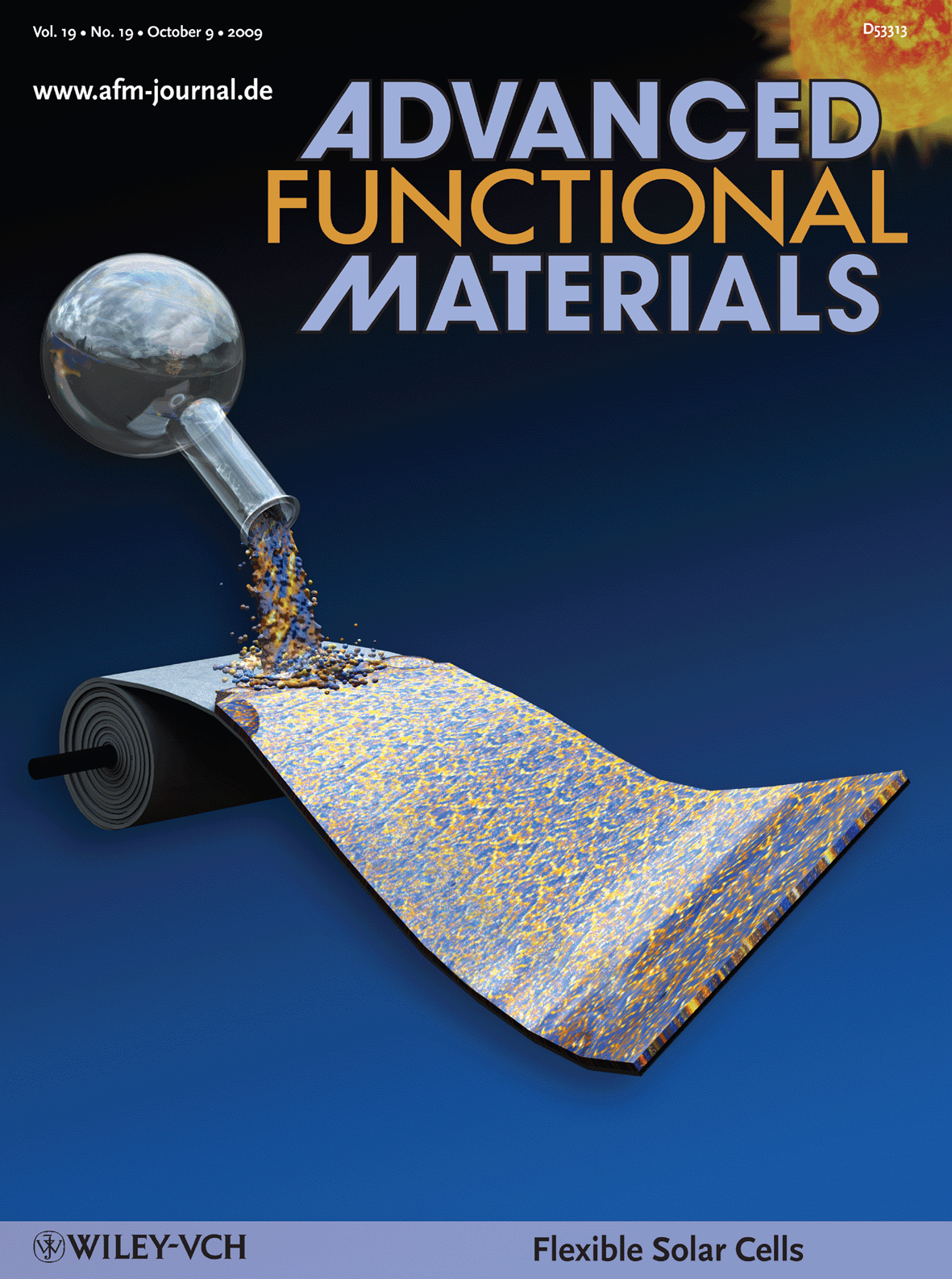 |
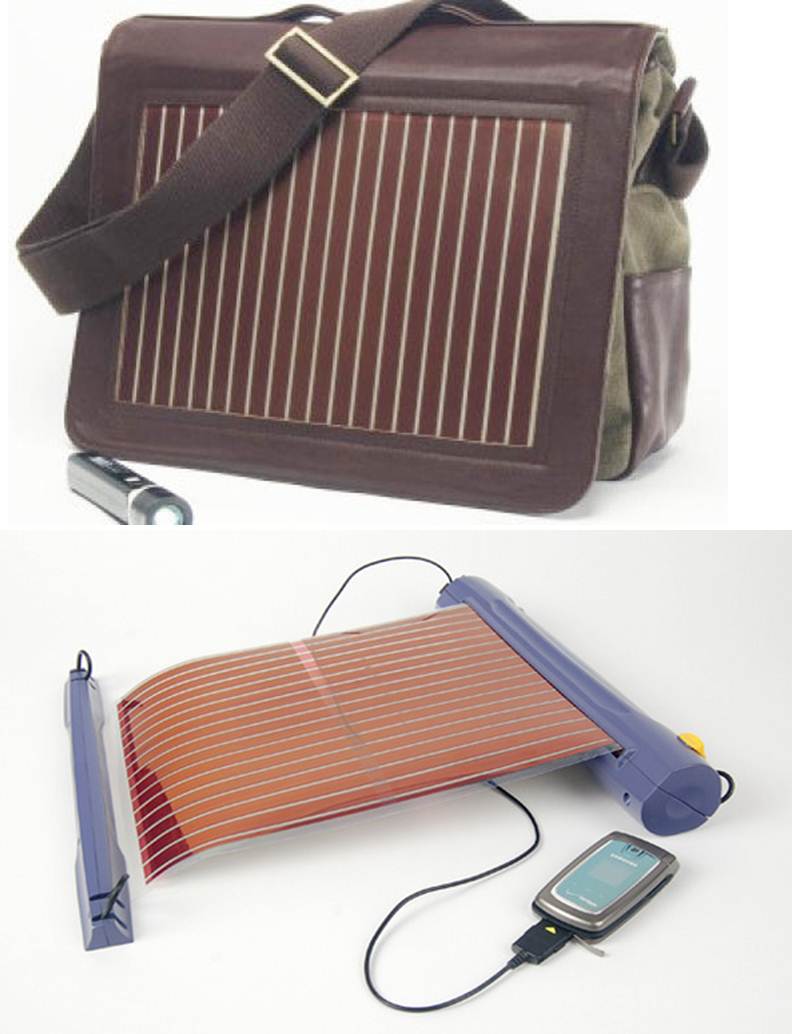 |
B. Walker et al. Adv. Func. Mater. 19, 3063, 2009. |
Konarka Plastic Products |
Bulk heterojunction (BHJ) solar cells based on blends comprising conjugated polymers and fullerene acceptors are under considerable investigation due to their potential to enable low cost devices. Significant improvements in power conversion efficiencies (PCEs) have recently appeared due to combined improvements in materials design, interface control, self-assembly of donor and acceptor phases, and device fabrication and engineering. |
|
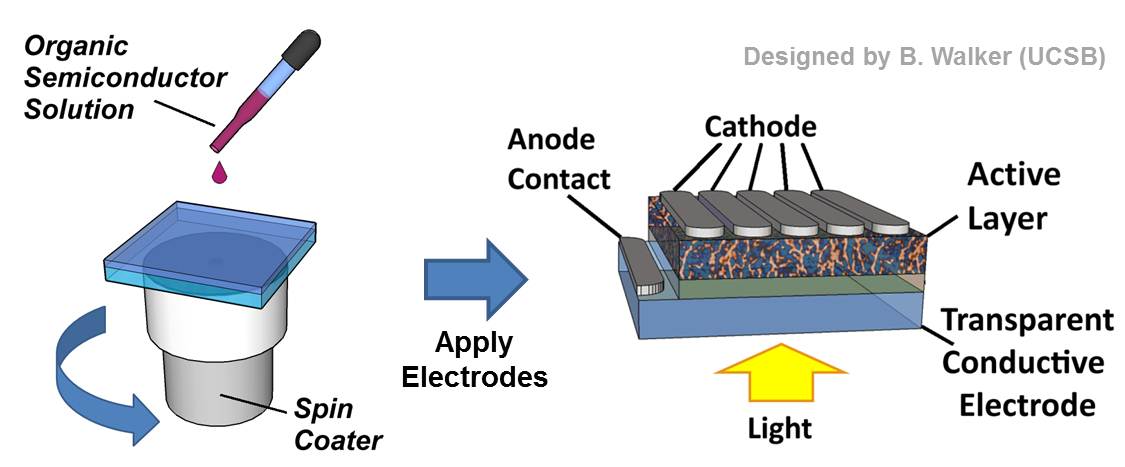 |
|
Fundamental quantities which determine the PCE include the open-circuit voltage (Voc), the short-circuit current (Jsc), and the fill factor (FF) according to following equation: |
|
where Pin is the power of the incident light. In BHJ solar cells, the Voc has been correlated with the energy difference between the highest occupied molecular orbital (HOMO) of the polymer (donor) and the lowest unoccupied molecular orbital (LUMO) of the fullerene. To minimize the contact resistance the interface between the active layer and the electrodes should be ohmic. Such a requirement has led to efforts in interfacial engineering, including the use of thermally deposited LiF or bathocuproine (BCP), selfassembled monolayers (SAMs), and metal oxides (i.e. TiOx, CsCO3, MoO3, and ZnO).
|
|
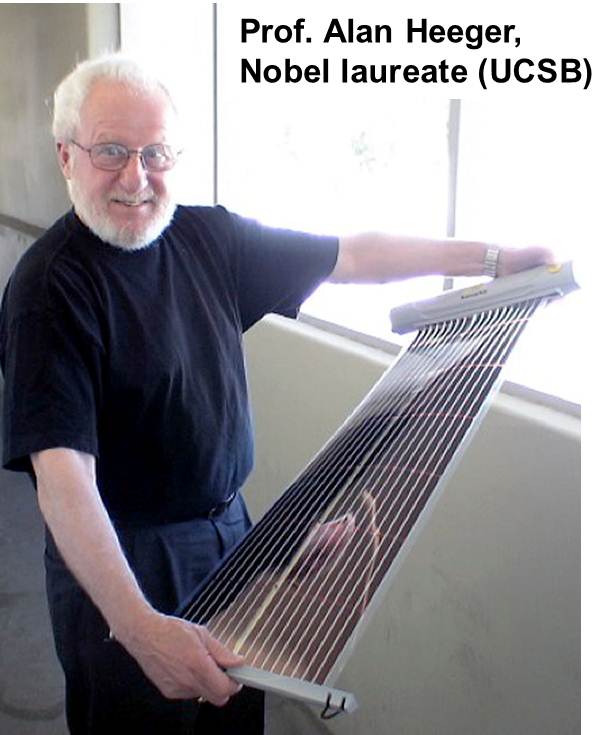 |
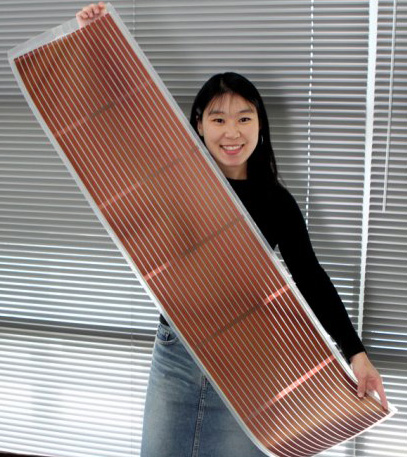 |
| Organic solar cells on flexible substrates allow electronics to be placed on curved surfaces, for example, putting solar cells on vehicle roofs. | |
| Reference | |
1. Gunes, S.; Neugebauer, H.; Sariciftci, N. S. Chem. Rev. 2007,107, 1324.
2. Park, S. H.; Roy, A.; Beaupré, S.; Cho, S.; Coates, N.; Moon, J. S.; Moses, D.; Leclerc, M.; Lee, K.; Heeger, A. J.
Nat. Photon. 2009, 3, 297.
3. Chen, H.-Y.; Hou, J.; Zhang, S.; Liang, Y.; Yang, G.; Yang, Y.; Yu, L.; Wu, Y.; Li, G. Nat. Photon. 2009, 3, 649.
4. Walker, B;. Kim, C.; Nguyen, T.-Q. Chem. Mater. 2011 23(3), 470.
5. http://en.wikipedia.org/wiki/Polymer_solar_cell
6. http://en.wikipedia.org/wiki/Organic_solar_cell#Bulk_heterojunction_photovoltaic_cells |
|



